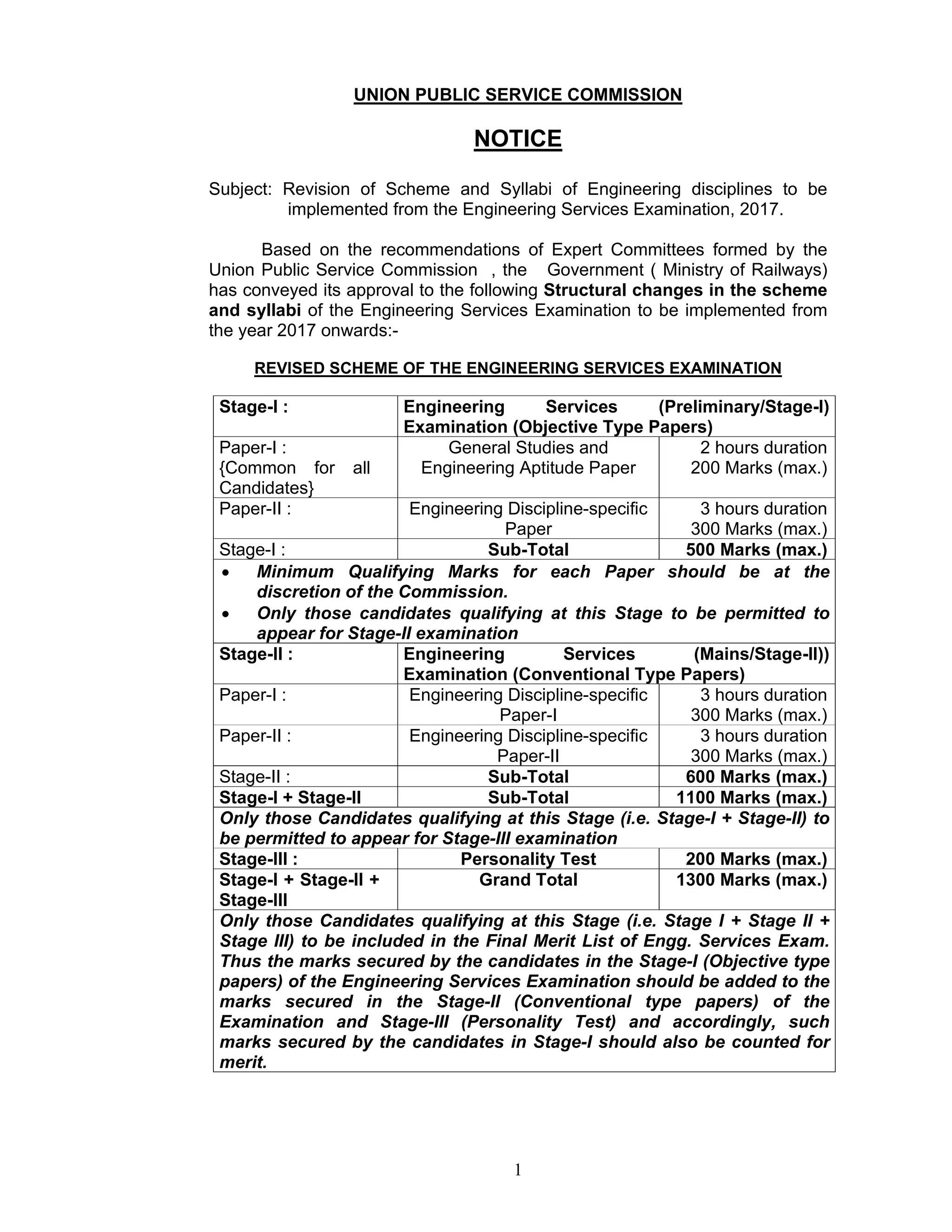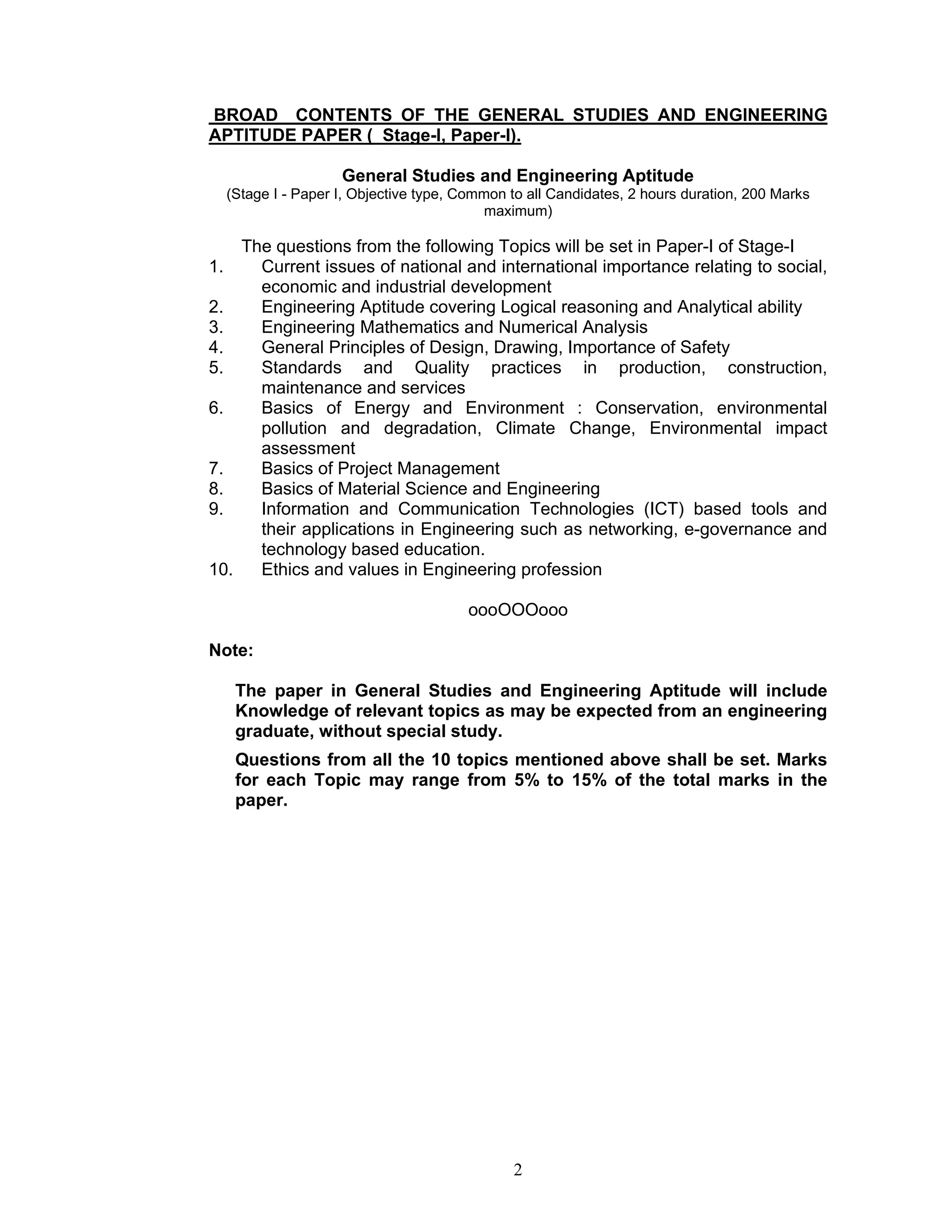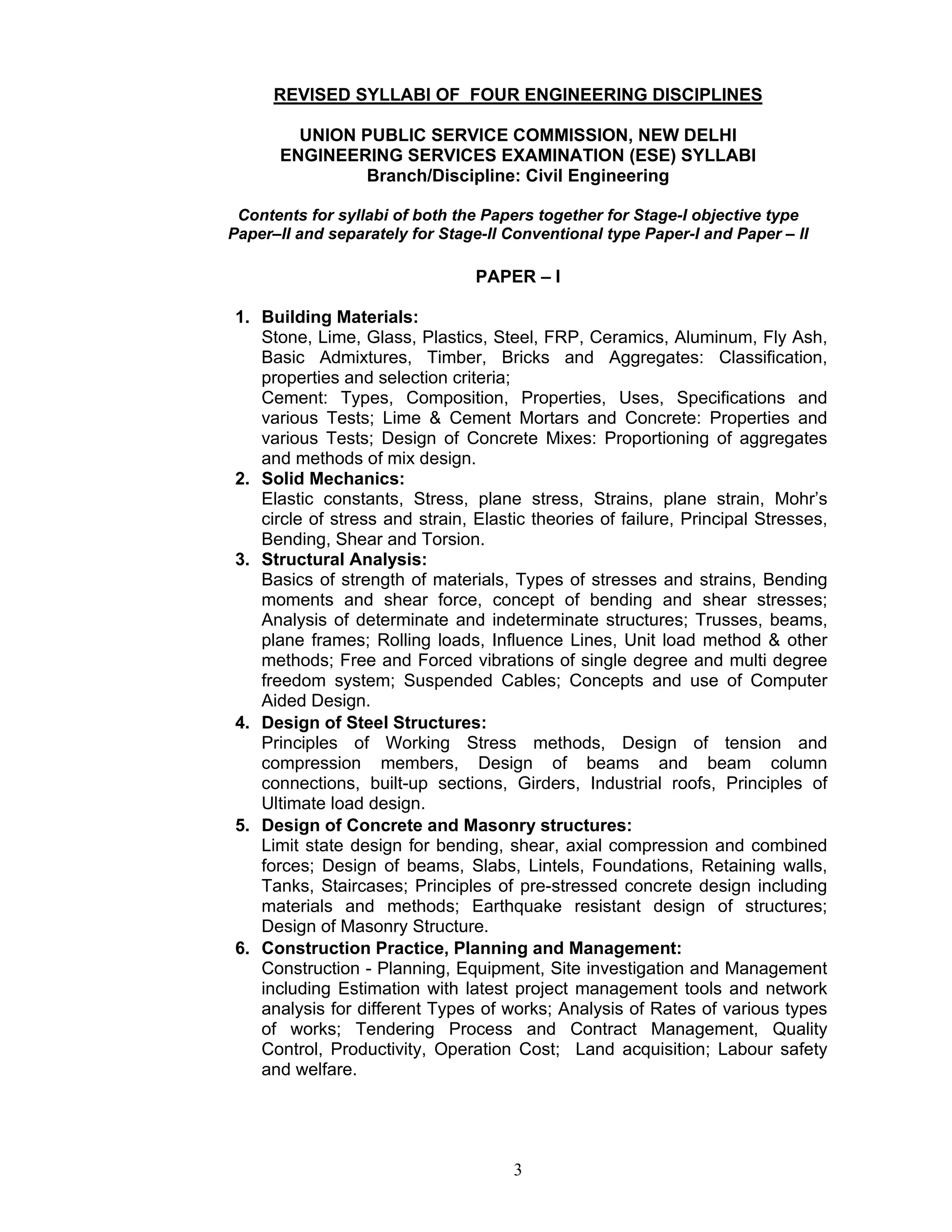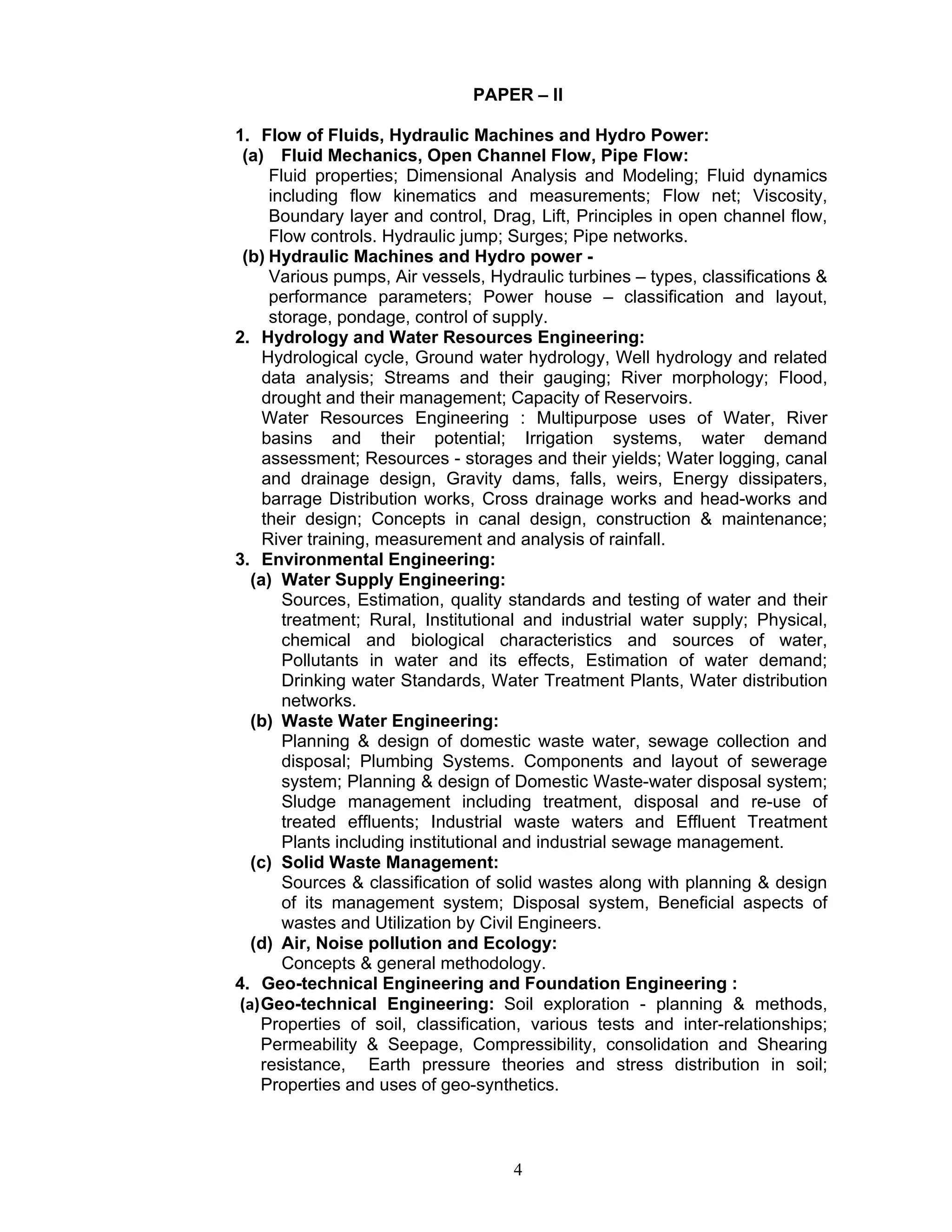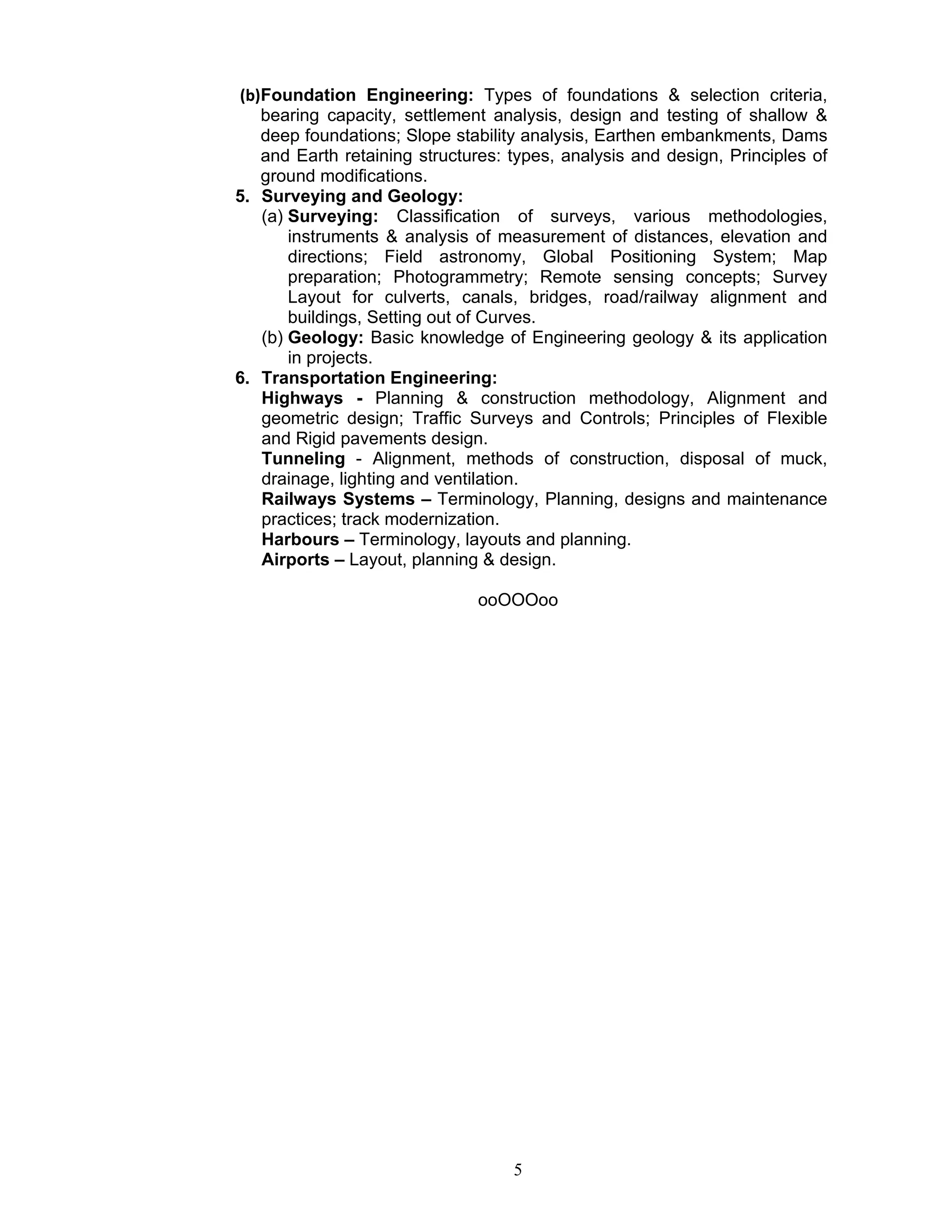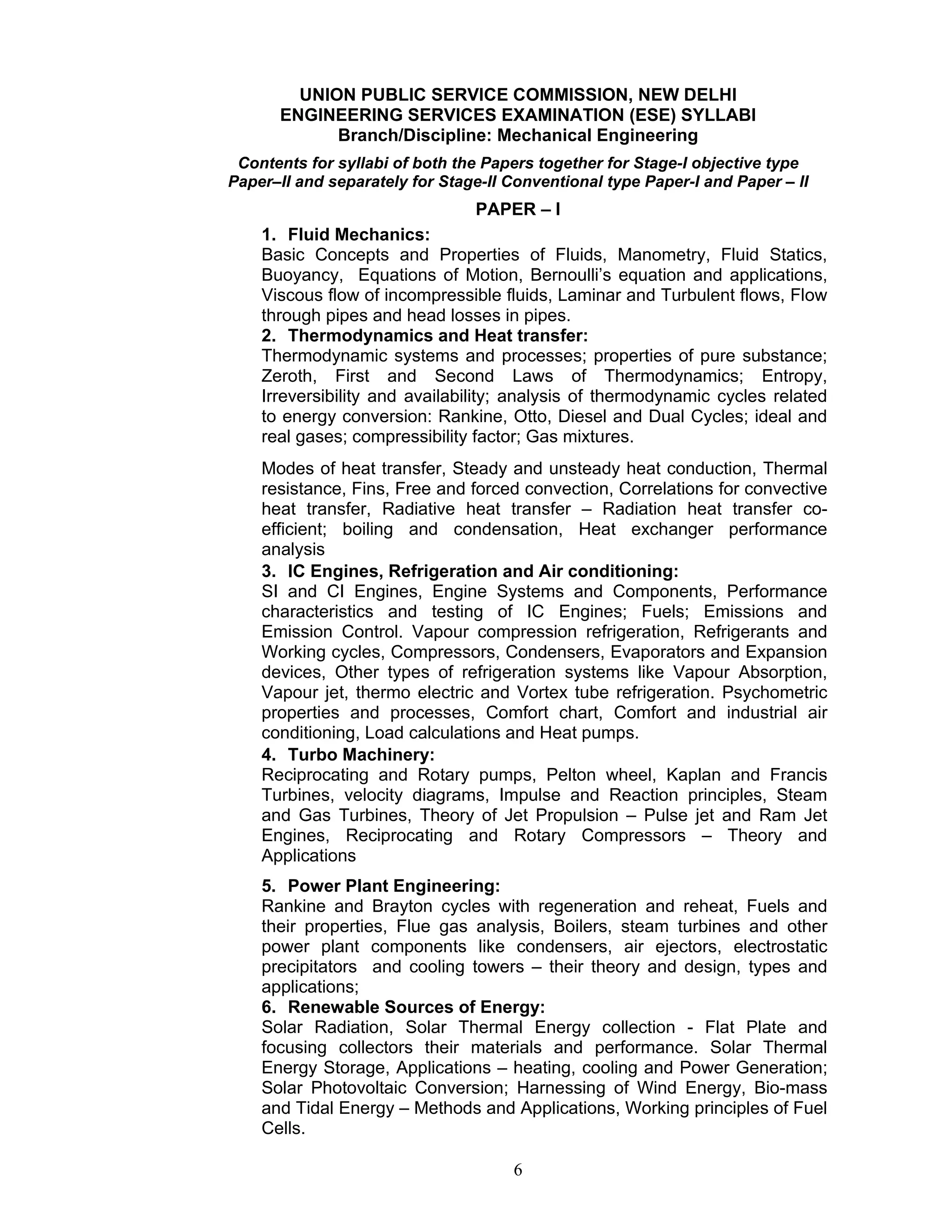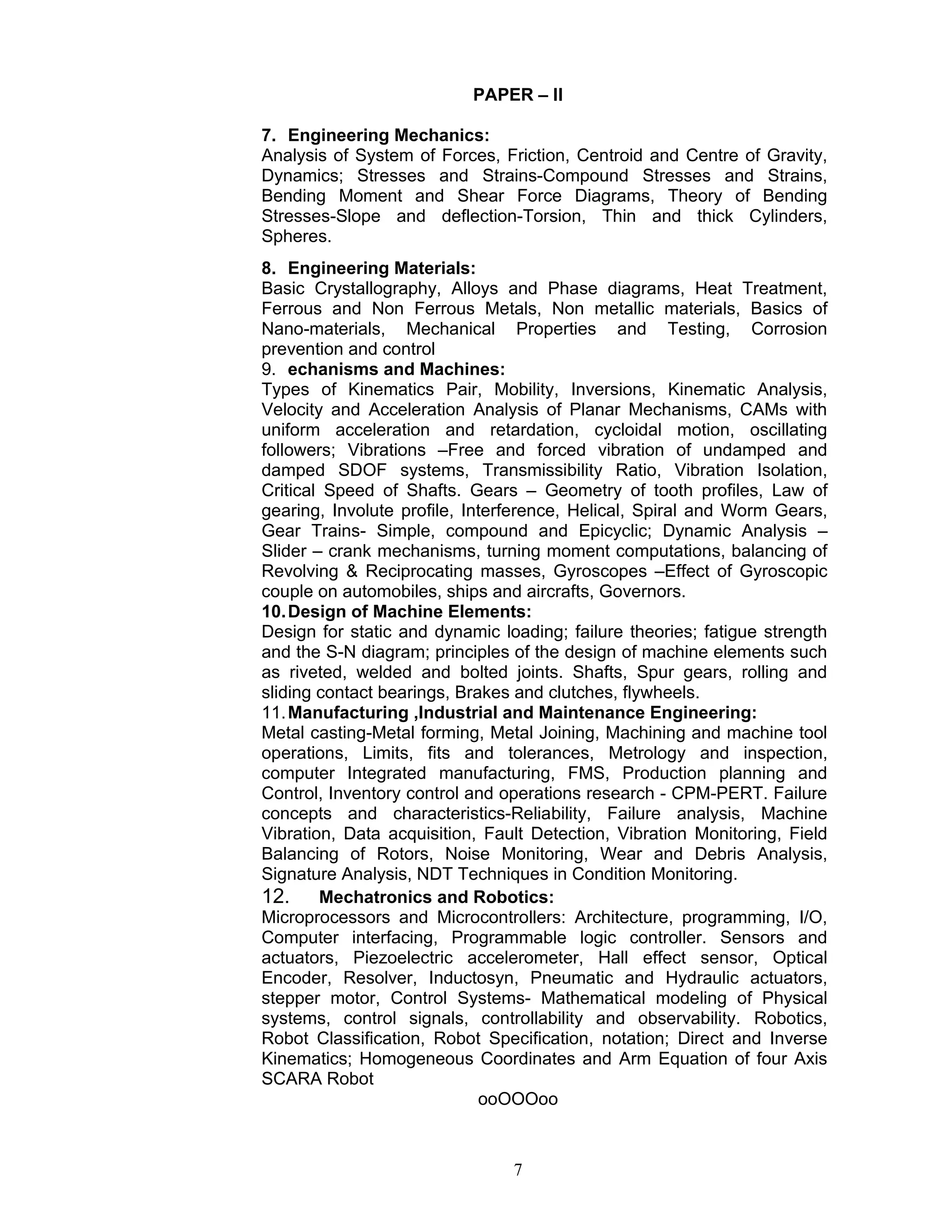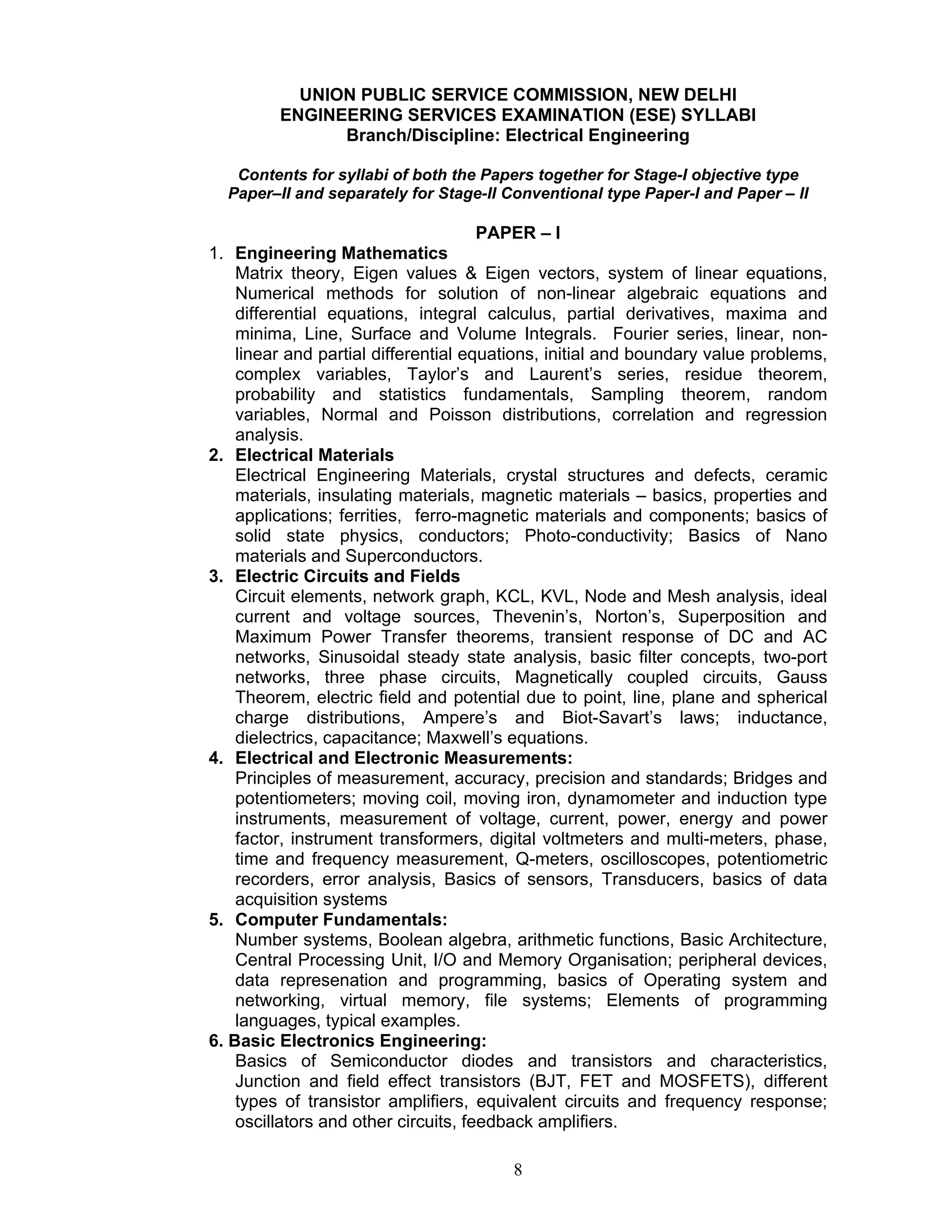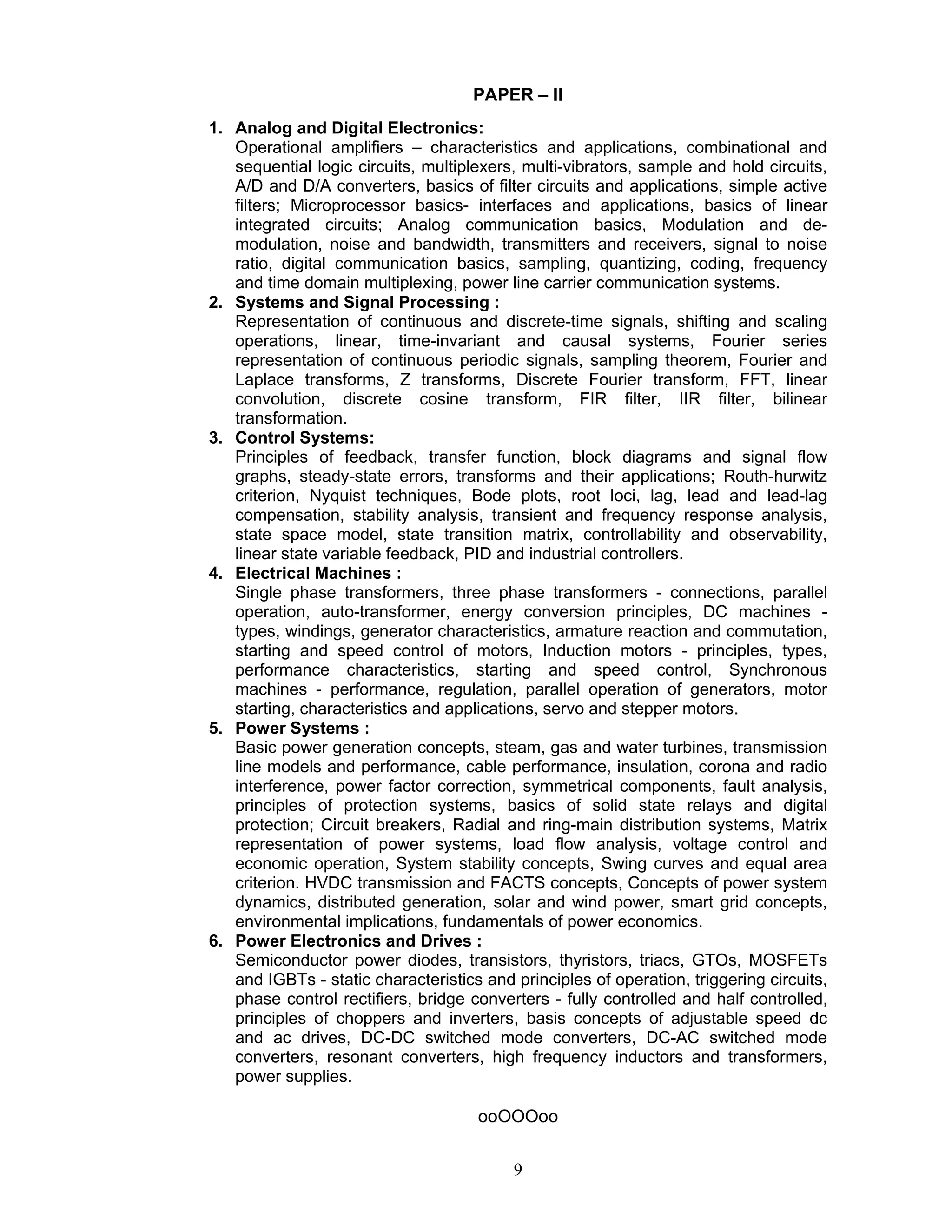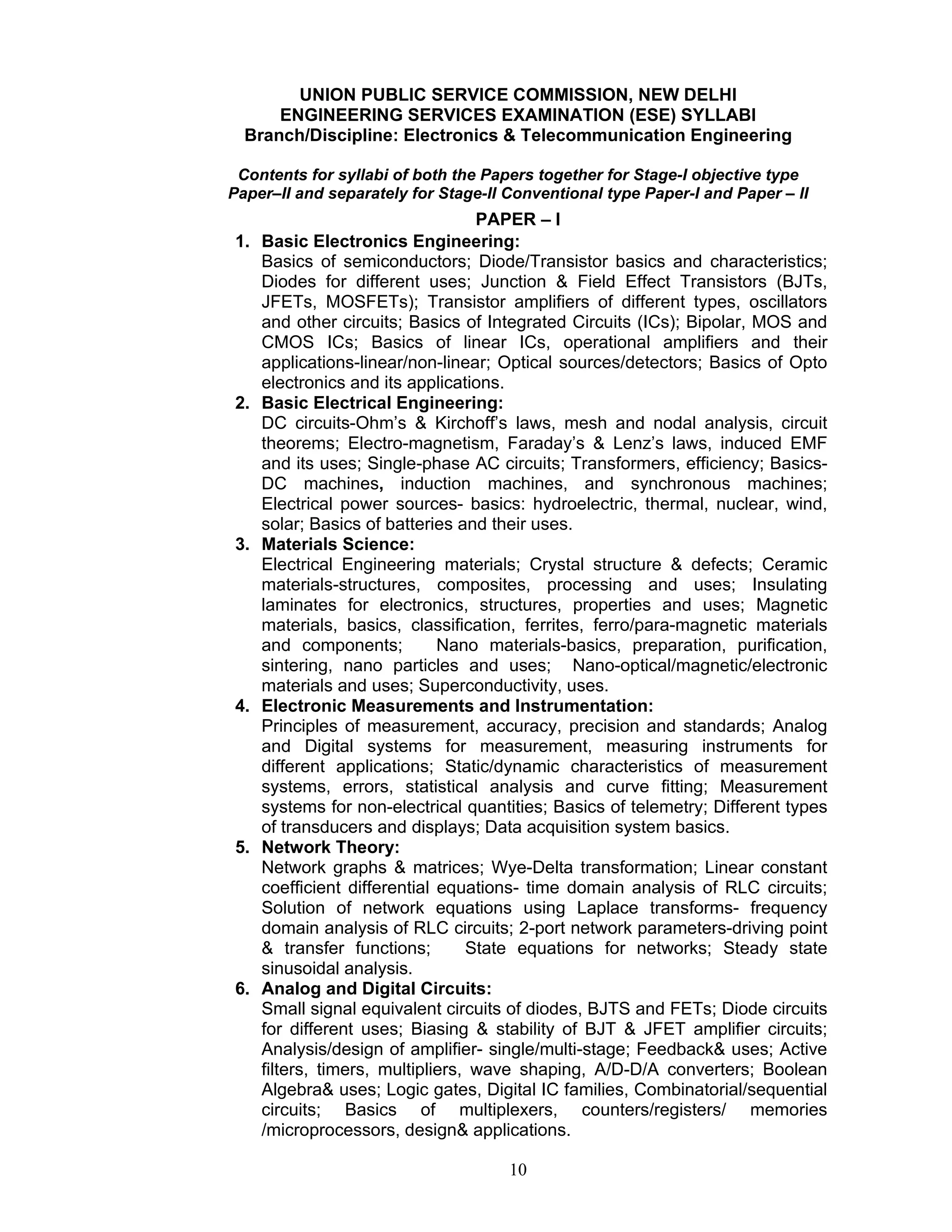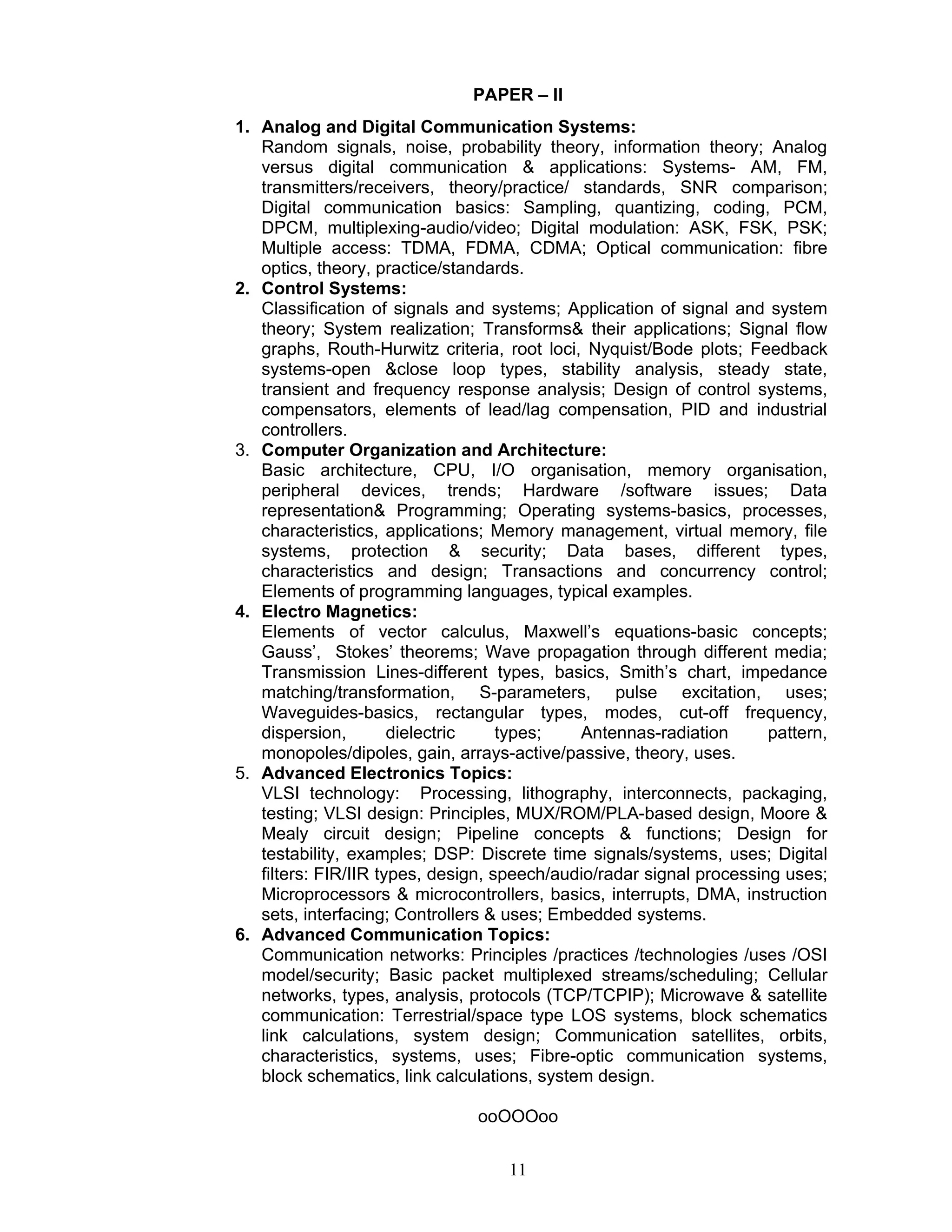The document outlines revisions to the scheme and syllabi for the Engineering Services Examination administered by the Union Public Service Commission in India, to be implemented in 2017.
Key changes include:
1. A two-stage examination with objective and conventional papers, plus a personality test. Stage I has two objective papers, while Stage II has two conventional papers.
2. The syllabi for civil, mechanical, electrical and other engineering disciplines have been revised and expanded. Stage I paper II and Stage II papers I and II will test discipline-specific topics.
3. Candidate performance across all stages will determine final ranking. Only those clearing each stage will advance to the next.
